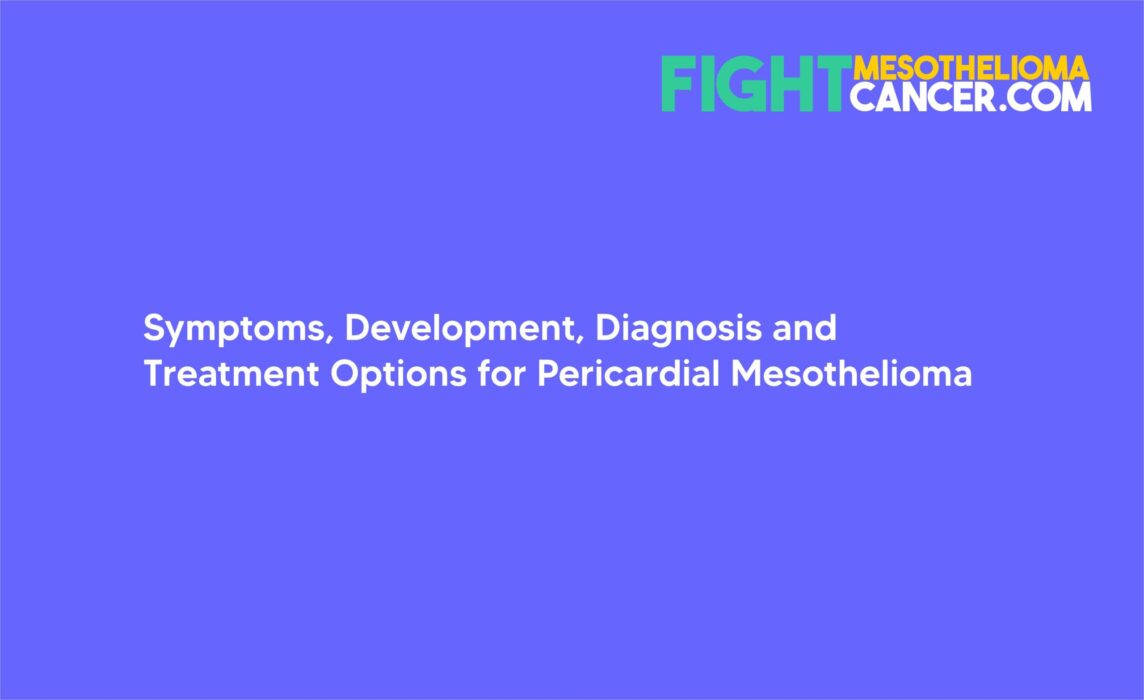Pericardial mesothelioma is a cancer that damages the linings of the heart (pericardium). The pericardium is a membrane consisting of mesothelial cells that surround the heart and provide protection to it.
The pericardium is made up of 2 different layers; 1) an outer layer called parietal layer and 2) inner layer called visceral layer. The parietal layer lines the entire chest cavity while the visceral layer lines the heart.
Pericardial mesothelioma occurs when the patient develops cancerous tissues around the linings that surround the heart, and thus around the Pericardium.
Why is the pericardium so important to the body? This is because it acts as a fluid filled ‘sac’ that insulates and protects the heart from malignant tumors.
This also keeps the heart intact within the chest cavity and prevents the heart from over expanding when blood flow in the bloodstream increases.
The space between the parietal layer & the visceral layer, known as the pericardium produces fluid designed to keep the whole area lubricated and to lessen friction between the membranes, thus allowing them to slide and glide against each other and pumping blood into the body.
The Pericardium?
The pericardium is a double wall like sac that encloses the heart and the primary blood vessels such as pulmonary arteries & veins.
The pericardium is made up of 2 layers; the fibrous pericardium and the serous pericardium. The serous pericardium is divided into 2 distinct layers; the parietal pericardium and the visceral pericardium.
The visceral pericardium is the outer surface of the heart muscles while the parietal pericardium is the inner surface of heart muscles.
The space between these 2 layers is called the pericardial cavity lubricated by a film of pericardial fluid. Buildup of excess fluids in this cavity can result in heart palpitations & compression of the heart.
Development of Pericardial Mesothelioma
Pericardial mesothelioma occurs in 10% of all mesothelioma cases, and thus is very rare. While Pleural mesothelioma is well known to be caused by Asbestos fibers that jam and chronically inflammate the lung linings of the heart, the cause for pericardial mesothelioma is not well known.
Cancer scientists are unsure how durable asbestos fibers can get lodged up in the heart’s serous lining (the pericardium). Just like peritoneal mesothelioma, there are 3 theories:
i) Inhaled asbestos fibers are transported through the lymphatic system to the pericardium (space between the parietal & visceral peritoneum layers).
ii) Asbestos fibers entered the body through foods & drinks that asbestos workers had whilst on the job. Asbestos dust & fibers in the air is common among workplaces such as factories, shipyards & metal works.
iii) Asbestos fibers are carried into the pericardial cavity & lining by being broken down into smaller pieces and transported through the bloodstream.
Symptoms of Pericardial Mesothelioma
Symptoms of Pericardial mesothelioma can easily be mistaken for symptoms of other diseases, thus it is very difficult to diagnose mesothelioma.
Most symptoms of pericardial mesothelioma are caused by the build-up of fluids in the pericardium and thickening of pericardial layers. Here is a list of common symptoms of pericardial mesothelioma:
- Fever & fatigue
- Night sweating
- Difficulty breathing (as a result of increased pressure on the heart due to buildup of mass tumor)
- Chest pain
- Abnormal heart beats or heart palpitations (as a result of fluid buildup in the pericardium that makes it difficult for blood to flow into the heart and also makes it difficult for the ventricles to completely fill)
Diagnosis of Pericardial Mesothelioma
Diagnosing Pericardial mesothelioma involves assessing the patient’s current symptoms, current medical conditions and past medical history. A thorough physical examination by a doctor is also required.
Advanced imaging techniques such as Magnetic Resonance Imaging (MRI), X-Rays or Computed Tomography (CT) scans are used to determine the exact location of any cancerous tumors.
A biopsy may also be required to confirm the originating point of cancer. A biopsy will help in eliminating cancerous tissues or fluids (ascites) from the Pericardium. A laboratory test is then conducted to see if the patient has indeed developed mesothelioma.
Treatment Options for Pericardial Mesothelioma
Surgery is usually not a very good option for treating Pericardial mesothelioma. There are some rare cases where if the cancer is diagnosed early, surgery can be used to remove small pericardial tumors (cancerous tissues residing in the Pericardium between the parietal & visceral layers).
Because the heart is so close to the Pericardium, performing such a surgery is very risky and should be avoided unless extremely necessary.
Doctors recommend palliative care as the only option for treating patients with Pericardial mesothelioma. This is done to reduce pain and improve the quality of life for the patient.
dr. Bulawan









